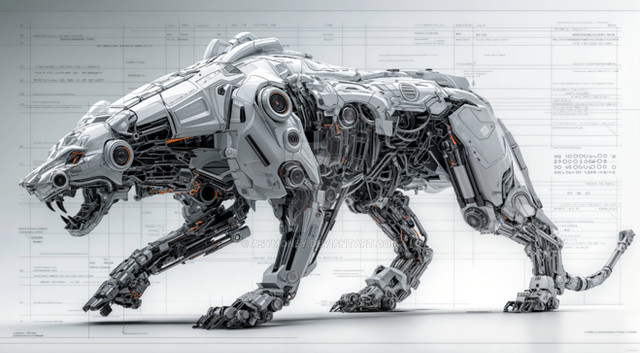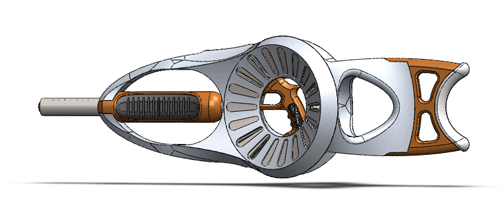HOME | DD
 ChatlaninKyr — Predictable Question
ChatlaninKyr — Predictable Question

Published: 2015-05-20 17:01:49 +0000 UTC; Views: 2116; Favourites: 23; Downloads: 18
Redirect to original
Description
Autonomus interstellar spacecraft, model type Anabasis-3, classification S5-P8*3ds-V4t5r-L3c-E.
Predictable Question was put into operation more than 60 years ago as a reconnaissance spacecraft. After several decades of work it was decommissioned during planned modernization of the reconnaissance fleet and transferred to the Cartographic Agency. There spacecraft was re-equipped and, in turn, transferred for use to the mapping team of Luok, Utpa and Dzect .
Size
Short-range FTL engine diameter is 137.65 m, the size along the longitudinal axis is about 72.7 m (including primary camera and docking port), diameter of the widest part of hull is 25.02 m. Size of the inner part of each habitation compartment is 10.25*4.82*3.97 m.
Instrumentation
· Primary hyperspectral camera is used for high-orbit and medium-orbit photography, or for the ultrahigh resolution survey of specific areas (for example, future landing sites).
· The second hyperspectral camera is the main mapping instrument on low orbit
· Stereo camera and laser altimeters are used to construct highly accurate three-dimensional terrain model.
· Primary mapping spectrometer is used to determine elemental composition of the surface, the secondary spectrometer studies atmosphere.
· Radiolocation system is the main mapping instrument for the planets with dense atmosphere that is opaque in most frequency ranges. In addition, radio pulses can penetrate several kilometers beneath the planet's surface, providing data on the composition of geological formations.
· Long-range high-gain antenna provides communication with mapping satellites around other planets of the system. It can also be used as additional radar or as a radio telescope for quasars monitoring. (Quasars are the base of the global galactic coordinate system; planetary system positioning using quasars is usually performed by reconnaissance spacecrafts.)
· Tunneling scanner (it has nothing to do with a scanning tunneling microscope) uses hyperspace effects to study planetary interior. The scanning system consists of two parts: it requires the satellite deployed on the same orbit as the spacecraft at the opposite side of celestial body.
Other facts
· Predictable Question is larger than most mapping spacecrafts as it was originally designed for large multispecies crew (in particular, habitation compartments are designed to accommodate Ranadgs). As a result, cartographers use hardly a quarter of its interior.
· Like most civilian ships, Predictable Question doesn’t have control module or bridge. Thanks to implants and distributed computer network navigator can make adjustments and set a new course from any place of the interior.
· Artificial gravity on board is usually 1.07g. It’s slightly more than standard gravity for Ziants and a third less than standard for Giekian. Course of the spacecraft is calculated in such a way that the acceleration during maneuvers doesn’t exceed this level.
· As the terms “bow” and “aft” aren’t very applicable to the craft capable of moving in any direction, the crew usually uses phrases "the instrumental side" and "the docking side".
· When cartographers are accompanied by Context , it is attached to the docking mechanisms perpendicular to the main axis of the ship. In this case, for reasons of safety docking side engines are shut down.
· Predictable Question is equipped with two faster-than-light engines. Short-range FTL engine is based on the further development of the Alcubierre drive concept and is used for jumps within planetary system.
This one took me about three months to finish...
Model is done in SketchUp.
Every mapping instrument except the tunneling scanner is based on actually existing instruments (I mostly used Mars Reconnaissanse Orbiter, Mars Express and Meteor-M satellite as samples), so please tell me if you see any factual error in those devices.
The image itself was just too big, so I reuploaded it in lower resolution.
Full resolution is on the link , and its size is about 54 megabytes.
Related content
Comments: 8

Hmm, how far could one get with a short-range FTL engine alone (in case the main FTL engine went FUBAR, for example)?
👍: 0 ⏩: 1

Oh, well, I only gave that link to illustrate the circle segments problem 
In case your question still applies, the short-range/interplanetary FTL is at the very least supposed to get a spacecraft from inner system to Kuiper belt (where jump drive can be engaged) and back, with F-class stars being the largest in terms of size and distance to Kuiper belt of all routinely colonized systems. I've also been considering the use of libration points, but right now it will probably look like I'm stealing this idea from you, and at the same time I'm not sure it is consistent with the rest of the Initial Stage FTL concept.
In-universe, the main limiting factors for warp drive range are energy requirements (obviously, it turns off if you run out of power) and the cost of exotic matter (fuel for both types of FTL). So in theory, if you are loaded with insane amount of e-matter and are prepared to make stops every couple of days and wait until batteries and capacitors recharge, even a civilian warp drive can get you to another star eventually. Another thing is military-grade warpships built to exploit arrival effect as a weapon. Naturally, they are by default loaded with insane amounts of e-matter and have the best power systems available; on the distance of few light years, that can make them even faster than a jump drive equipped spacecraft. And no, there are no known physical limits on the warp-mode "speed" or the length of warp-mode travel (pretty much like there is no physical limit on the yield of nuclear explosion IRL); you can raise both as long as you can provide exponentially MOAR POWER and MOAR MONEY.
👍: 0 ⏩: 1

Ah, the all-too common problem of dedicated worldbuilders: things getting outdated as the constructed universe develops further. I know it all too well ;___;
(I still think the idea of two entirely separate FTL systems is an interesting idea, though.)
👍: 0 ⏩: 1

In retrospect, the main reason they were separate is because I didn't have anything on the jump drives. I knew what I wanted them to do, but had no idea how they were supposed to do it. When I came up with a decent handwavium pseudo-explanation, I realized that it made sense for the ring to be responsible for both FTL modes.
👍: 0 ⏩: 0

This for your galaxy project too? It's quite impressive! I will certainly feature this in W-B-I
👍: 0 ⏩: 1

Thank you very much!
Yes, this thing belongs to characters I draw some time ago. And from it you can imagine how a typical spacecraft in my setting looks. Except that really typical spacecraft has one single exhaust nozzle at one side of the hull and docking port at the other side.
👍: 0 ⏩: 1

My pleasure! 
I believe I remember those characters. Two Ziants and a Geikian, right?
I'd like to see some stories featuring them. Who knows what kinds of shenanigans a mapping team can get into? After all, they're mostly in unexplored space! 
But if you're not much of a writer that's ok.
👍: 0 ⏩: 1

You remember right, and they are mentioned in description by the way
Yes, unfortunately, I'm not much of a writer. Maybe I'll depict more scenes from their life, but there won't be any connected story.
And their job is definitely not that exciting. The reconnaissance vessels (also mentioned in the description) are first to explore any new system. Only if it appears to be of some value, the mapping spacecraft is sent to make maps of celestial bodies.
Actually my goal was to create characters that would live in futuristic sci-fi setting, but at the same time would be ordinary for this setting.
👍: 0 ⏩: 0

























